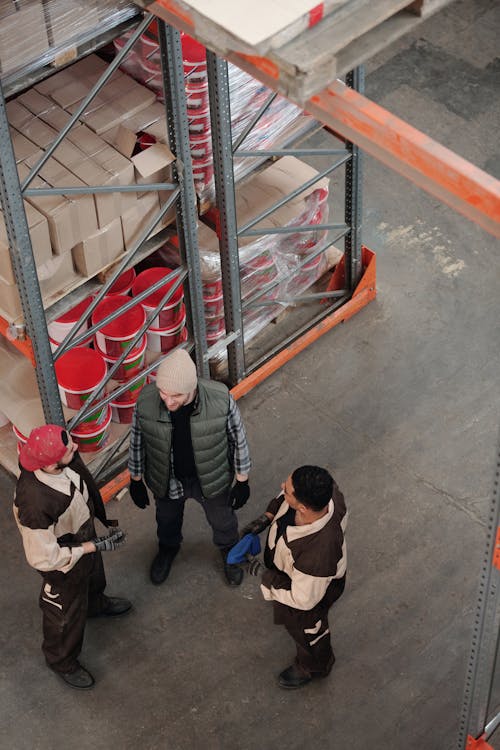Dispatch Trucking and How E-Commerce Growth is Shaping Logistics
The Role of Dispatch Trucking and Emerging Trends
E-commerce, as a rapidly developing field in the past decade, has greatly changed the tendency of logistics strategies throughout the world. With online purchases getting common in society, including the rise of dispatch trucking, the supply chain processes must evolve to cater to the increasing demands of efficiency and effectiveness in delivery, coupled with the need to satisfy the rising customer expectations.

Uniqueness II – The Development of Logistics Strategies in Reaction to E-Commerce
- Omnichannel logistics is a new concept that is gradually gaining prevalence in the current economy all over the world.
Their omnichannel logistics approach is one of the most revelatory changes in logistics strategies that have surfaced in the last few years. In the past many companies had two supply chains for physical stores and an online business model. Though the use of these channels has become important over the years due to changes in consumer behavior that seek a consistent experience whether they are shopping online or physically. To address the challenges of omnichannel logistics, there is a need for proper planning of inventory management, order processing and deliveries to be coherent with a single plan throughout the various sales channels.
- Highlights of Last-Mile Delivery The following comprise the lack of last-mile delivery: Conclusion concluding that the growth of last-mile delivery is prevalent in the current market.
The final stage of delivery, revenue of which is the final delivery of goods from the delivery center to the client’s house, has become inexhaustible due to the development of e-commerce. People no longer want to wait for their products to arrive because they believe that they should get it within the same day or the next. This has precipitated inventions like the micro-fulfillment centers which are miniature warehouses within urban areas to facilitate delivery among others like crowdsourced delivery models which incorporate gig workers for more flexibility in deliveries.
- Enhanced Focus on Supply Chain Visibility
This makes real-time tracking and transparency an indispensable characteristic of e-commerce logistics. Today’s consumer and business customers expect order status and delivery time information to be as current as a real-time clock. To support these needs, more and more companies have leveraged different solutions like IoT sensors, block chain, and enhanced tracking tools, which offer full visibility of the whole supply chain. These technologies assist in better management of stock and inventories, reduction of supply chain delay and enhancement of supply chain.
- Pervasiveness of automation and Robotics
Technology has brought a positive impact especially in warehousing and order fulfillment activities. Many e-commerce organizations have incorporated robotic systems in several activities like picking, packing and sorting. Other equipment like the automated storage and retrieval systems (ASRS) and conveyor belts have also grown to be common especially in large distribution points. Robotics and automation are not only effective, but they also solve such problems as a shortage of workers and increasing operating costs. In the same manner, the use of artificial intelligence in the field of logistics management can potentially enhance the capability of the system in the planning of the routes in delivering the products, managing the inventory and forecasting of demand.
- Sustainable Logistics Practices
As the people become more conscious of the environment, pressures are forcing e-commerce firms to adopt sustainable supply chain management models. This includes their use of environmentally friendly packaging materials, efficient delivery routes to minimize the emission of greenhouse gases and having green delivery vans. For effective implementation of corporate social responsibilities in logistics, they are not only socially responsible but also patient and environmentally sensitive customers would prefer the business with environment friendly policies.
Future Direction in the E-Commerce Logistics
- A new phenomenon that fits the concept under discussion is the emergence of hyperlocal Fulfillment Centers.
This is because as the segment of e-commerce grows, so does the customer’s tendency to require quick shipping. Small distribution hubs, designated in various city locations—such as hyperlocal fulfillment centers and dispatch trucking facilities—will become more evident. These centers help to minimize the delivery space needed so that the fulfillment of delivery can be made within a shorter time frame. Businesses are going to require high-profile distribution centers in densely populated metropolitan regions and accurate and efficient stock tracking for same-day delivery.
- Introduction of Self-Driven Cars and Other Delivery Vehicles
Use of robots like drones and self-driving trucks in the delivery of products and services are expected to be on the rise in the coming future for the e-commerce industry. For instance drones can make speedy delivery, especially in overcrowded or hard to reach places while on the other hand, automatic trucks can transport large quantities of goods over long distances most effectively. There is still a long way to go in terms of regulation and also in terms of the technology, but the continuation and the evolution of autonomous delivery solutions will cause disruption and revolutionize goods transportation and delivery.
- A Synthesis of artificial intelligence and machine learning
AI and ML are also predicted to progress logistics strategies in the future. AI technologies can accurately forecast the degree of demand, and optimize the amount of required stock and routes. Advanced techniques also benefit results in forecasting accuracy, thus helping companies make the right decision. AI and ML integration is desirable for supply chain and logistics where flexibility and real-time response are needed in order to increase the customer satisfaction.
- The Emergence of Per-Period Delivery Systems
Some examples are one day access pass, two days access pass and other delivery memberships which have gone more popular. There are discussions on how the business can adapt the distribution methods and deliver the special privileges to the subscribers. This trend is enhancing the convenience and reliability of the shopping experience in consumer’s perception. To facilitate these subscription strategies, businesses will have to design adaptable supply chain strategies as well as the costs and challenges within this logistics.
- Smart Warehousing: What’s New?
Smart warehousing through the help of IoT, AI and robotic technologies are expected to gain higher traction. Modern smart warehouses need to use real-time data to make daily decisions on stocks, operations, and errors prevention. Iot sensors also can detect the conditions which are into the warehouse Whereas AI algorithms can forecast the consumer propensity and automatically re- order products. Further post-approval growth in smart warehousing will assert pressure on logistics operations to enhance efficacy and…
- Change of Linear Supply Chains Towards Circularity
With the growth of sustainable development as a top agenda, the concept of circular chains of supply is gradually emerging. Circular supply chains in particular seek to embody the three R’s namely reduce, reuse and recycle. At the moment, e-commerce companies are seeking ways for circular actions; product take-back programs, returns and refurbishment of products for re-sale and recyclable packaging. As the concept of circular supply chains takes root, this will not only be a solution to some of the environmental issues but also result in some other advantages such as the formation of new markets and cost efficiencies.
Conclusion
The growth of e-commerce has greatly affected how logistics has been shaped by creating the need for modern tactics such as omnichannel logistics, last-mile delivery, automation and the adoption of sustainable strategies. There is therefore a need for companies to keep emerging trends such as hyperlocal fulfillment centers, delivery without operators, and smart warehousing in check. With the adoption of these trends, the strategies of supply chain management would be improved, customer satisfaction level would be achieved, and companies would become competitive in the era of e-business.





